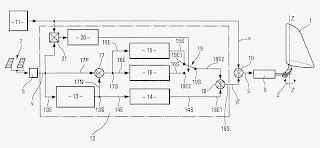Amazing Information
(Chapter11) of Automatic Flight Control by E.H.J Pallet & Shawn Coyle--Fly by wire is the concept that provide effective computer link between the
pilot control and control surface.
--This concept was implemented first in Concorde(elevon control)
& Boeing 767 for its wing control spoilers.
-- Airbus A320 was the only plane which FBW was designed for.
-- The increased effectiveness by Side-Stick(*1) Control column
Advantages of FBW Control System:
1) Weight Saving
2) Reduced Maintenance Time
3) Gust Load Alleviation
4) Automatic Manoeuvre Envelop Protection
5) Improved Handling
6) Fuel saving
(*1) Side Stick Control Column id the replacement of Control Column/Wheel Control Column.
A light weight control stick Which is fixed by Pilot Arm in Cockpit
Architecture of FBW
In advacne FWB Conrol System There are two basic termonologies are used
such Arcitecture & Conrol Laws.This system is also called actvie control system.
Architecture
The genaral Layout of the components such as computers and thier function are
called architecture.These copomuter are working with redundancy to inhance the stability
and the less failure system
In A320 there are seven operational computer working with ARINC 429
DATa Bus in communication among them and listed as under
1) ELACs Elevator/Aileron Computer (2)
2) SECs Spoilrer/Elevator Comouter (3)
3) FACs Flight Augmentation Computer(2)
Control Laws
The maanner in which the operational computers are expected to control the control surfaces are called Colrol Laws
Keeping in mind the conpcet of redundancy & the safety factors these conrols law are listed as under with there respective comuters
Normal Conrtol Law ---ELACs
Alternate Conrol Law ---SECs
Direct Control Law --Strick to Elevator/Direct Control
Mechanical Backup --Mechanical Link to the Pitch Trim
Special C-Star(C*) Control Law:
C* is the special type of Pitch Control Law which has much acceptance in commercial airlines.
This is a flight path command control law even at low speed including pitch command rate.In general the pilot is
able to select a particular flight path with particular angle such as level flight.Once this particular flight path with angle is
achieved then if Pilot releases the control stick this law ensures that that particular angle is retained
By introduction of pitch ate command this helps us to overcome Lags& over pitch activity allow speed and in flare mode at 50 ft above the
ground.


